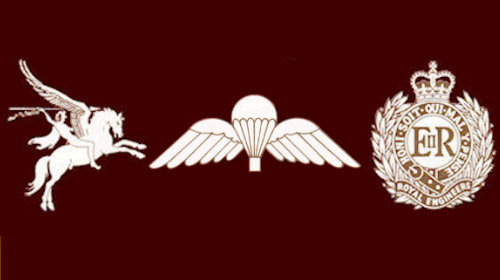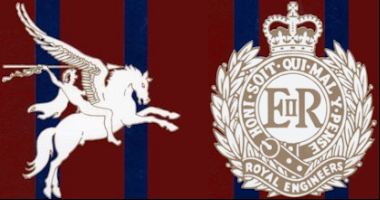
Roll of Honour

Tom Hicks, 1st Para Sqn RE and Railwayman. 14th August 1919 - 24th January 2021
By Lt Col Chris Davies MBE
 |
Tom Hicks was one of the last of the WWII generation of men who stepped aside from their chosen civilian occupations and volunteered to risk their lives in some of the most valiant encounters of the War, then quietly stepped back into ‘normality’ for the rest of their working lives. The valour with which they fought and the humility that they exhibited in putting the horrors they had witnessed behind them is their enduring legacy and a source of awe for us all. Tom was born in Widnes, Lancashire. From the age of 12 he lived in Royston, near Barnsley, for the rest of his life, so it was no surprise that it was an ardent “Yorkshire” heart that beat within him. Tough, resolute and loyal yet unassuming, amusing and warmly personable, Tom was a much-respected and much-loved friend. The life and times of Tom are wonderfully recounted in his son Norman’s book: Captured at Arnhem. From knocker up, through Engine Cleaner to Fireman and Driver, Tom was a Railwayman at heart and he spent the majority of his working life hauling countless tons of coal and, occasionally, passengers, across the network of rails that covered northern England. |
When war came, in 1939, he could have remained safely in a reserved occupation but he chose to volunteer to “do his bit”. Posted, inevitably, to Longmoor, the home of the Army’s Military Railway, again he could have resigned himself to a “cushy number”. However, he volunteered for the nascent Airborne Forces and, in March 1942, he joined The 1st Parachute Squadron Royal Engineers. With The Squadron and, as a member of ‘C’ Troop, closely embedded with the 3rd Battalion of the Parachute Regiment, Tom fought in the bitter Tunisian winter war which earned the newly-formed Airborne troops the nom de guerre of “Red Devils” from their German enemy. In July 1943, he parachuted into Sicily to capture the Primosole Bridge. His experiences there and his luck in surviving make an enthralling story in itself. But survive he did and, after a few months of long-range patrolling and a busy time Sappering in Italy,
The Squadron returned to England to prepare for its next encounter with the enemy: Arnhem. Tom was one of those engaged in the hectic defence of the Oosterbeek perimeter where he spent six days of exhaustion and horror before being wounded and captured. The months of captivity, coping with hunger, cold and fatigue whilst working in a German mine, required all of his innate grit, courage and stickability to survive.
He returned to England in May 1945 where, in 1946, after recuperation, Tom returned to the railway in Royston, to serve through the tribulations of nationalisation and the evolution from steam to diesel, until his retirement in 1982.
 |
Tom maintained his acute awareness, fitness and zest for living. On retirement he was a passionate gardener and he returned to parachuting. He jumped into Arnhem for the last time when he was 88! He walked, weekly, in his beloved Yorkshire Dales until well into his 90’s and, at 95, he bought a new tennis racket for his twice-weekly sessions, quickly explaining, “ah, but I only play doubles now!” He also charmed the ladies at his weekly jazz night dancing sessions in between tennis matches. Duty, loyalty, warmth, humour, courage, endurance are all characteristics that applied to Tom Hicks in full measure. They earned him enormous respect and his quiet, unassuming manner earned him countless friends. All will mourn his passing and bless their luck in having known such a uniquely humble and inspirational man. |












